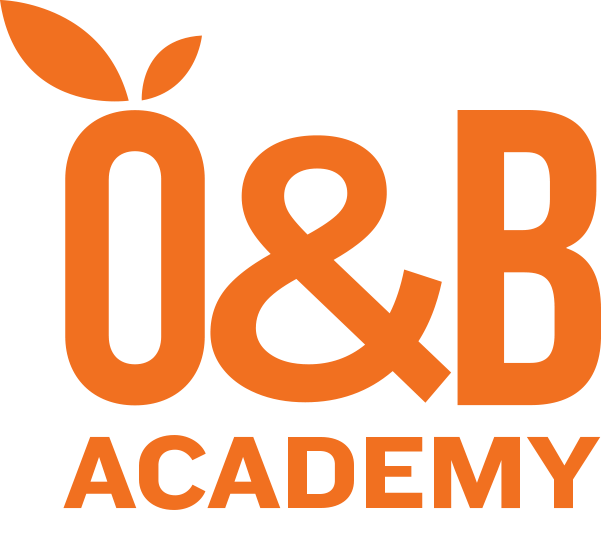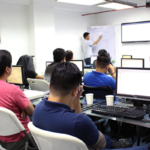Course Overview
The Software Testing Fundamentals course is meticulously designed to offer participants a thorough grasp of the principles, methodologies, and practices vital for mastering software testing. Covering an array of critical topics, this course empowers students with the knowledge, skills, and mindset indispensable for excelling in software testing roles across diverse industries. It commences with an exploration of foundational testing concepts, enlightening participants on the significance of testing within the software development lifecycle, encompassing basic principles, such as types of defects, testing objectives, and the pivotal role testing plays in ensuring software quality.
Subsequently, the course delves into Testing Mission and Strategy, guiding students in crafting effective testing strategies aligned with organizational objectives. It emphasizes the cultivation of the Tester’s Mindset, emphasizing traits like critical thinking and attention to detail essential for uncovering defects and enhancing software quality. Participants further delve into Oracles and Heuristics, gaining insights into decision-making tools crucial for guiding testing activities effectively. The course concludes with a focus on Complete Testing and Measurement of Testing, ensuring participants develop robust techniques for achieving comprehensive test coverage and evaluating testing effectiveness. Upon completion, participants emerge equipped with the essential knowledge and skills to contribute proficiently to the development of high-quality software products, regardless of their level of experience.
Learning Outcomes
- Demonstrate a thorough understanding of the principles, methodologies, and practices essential for software testing.
- Identify and explain the significance of testing within the software development lifecycle.
- Recognize various types of defects and understand their impact on software quality.
- Define testing objectives and articulate their importance in ensuring software quality and reliability.
- Craft effective testing strategies aligned with organizational objectives.
- Cultivate a Tester’s Mindset characterized by critical thinking, attention to detail, and curiosity.
- Apply decision-making tools such as Oracles and Heuristics to guide testing activities effectively.
- Implement techniques for achieving comprehensive test coverage, including functional, non-functional, regression, and exploratory testing.
- Evaluate testing effectiveness and efficiency through measurement techniques and key performance indicators (KPIs).
- Contribute proficiently to the development of high-quality software products by applying acquired knowledge and skills in software testing roles.
Course Outline
Testing Background
- Introduction to Software Testing
- Purpose and Objectives of Testing
- Role of Testing
- Software Errors
- Working Definitions for the Course
- Type of Testing
Testing Mission and Strategy
- Introduction to Testing Mission and Strategy
- Understanding Testing Goals and Objectives
- Aligning Testing Activities with Business Objectives
- Developing Effective Testing Strategies
- Continuous Evaluation
Tester’s Mindset
- Curiosity and Exploration
- Critical Thinking
- Attention to Detail
- Empathy Towards End-users and Stakeholders
- Collaboration
- Feedback Orientation
Oracles and Heuristics
- Introduction to Oracles and Heuristics
- Types of Oracles: Explicit and Implicit
- Type of Heuristics: Experience and Intuition
- Practical Applications of Oracles and Heuristics in Testing
Complete Testing
- Concept of Complete Testing
- Implications of Achieving Complete Testing
- Why Complete or Exhaustive Testing is usually impossible?
- Exit Criteria: When to Stop Testing?
- Concept of Coverage
- White Box Testing Techniques
- Statement of Coverage
- Branch Coverage
- Black Box Testing Techniques
- Equivalence Partitioning
- Boundary Values
- Decision Table
- State Transition
- Use Case Testing
- Limitations of Coverage
Measurement of Testing
- What is Measurement?
- Basic Measurement
- Key Items in Measurement
- Examples of Measurement
- Complexities in Measurement
- Scale of Measurement
- Measurement Validity
- Proxy Attributes
- Dangers of Proxy Attributes
Skill Level
Suitable For
Anyone interested in or involved with software testing, regardless of their level of experience.
Duration
day
Related Topics
Skill Level
Suitable For
Anyone interested in or involved with software testing, regardless of their level of experience.
Duration
day
Related Topics
Course Overview
The Software Testing Fundamentals course is meticulously designed to offer participants a thorough grasp of the principles, methodologies, and practices vital for mastering software testing. Covering an array of critical topics, this course empowers students with the knowledge, skills, and mindset indispensable for excelling in software testing roles across diverse industries. It commences with an exploration of foundational testing concepts, enlightening participants on the significance of testing within the software development lifecycle, encompassing basic principles, such as types of defects, testing objectives, and the pivotal role testing plays in ensuring software quality.
Subsequently, the course delves into Testing Mission and Strategy, guiding students in crafting effective testing strategies aligned with organizational objectives. It emphasizes the cultivation of the Tester’s Mindset, emphasizing traits like critical thinking and attention to detail essential for uncovering defects and enhancing software quality. Participants further delve into Oracles and Heuristics, gaining insights into decision-making tools crucial for guiding testing activities effectively. The course concludes with a focus on Complete Testing and Measurement of Testing, ensuring participants develop robust techniques for achieving comprehensive test coverage and evaluating testing effectiveness. Upon completion, participants emerge equipped with the essential knowledge and skills to contribute proficiently to the development of high-quality software products, regardless of their level of experience.
Learning Outcomes
- Demonstrate a thorough understanding of the principles, methodologies, and practices essential for software testing.
- Identify and explain the significance of testing within the software development lifecycle.
- Recognize various types of defects and understand their impact on software quality.
- Define testing objectives and articulate their importance in ensuring software quality and reliability.
- Craft effective testing strategies aligned with organizational objectives.
- Cultivate a Tester’s Mindset characterized by critical thinking, attention to detail, and curiosity.
- Apply decision-making tools such as Oracles and Heuristics to guide testing activities effectively.
- Implement techniques for achieving comprehensive test coverage, including functional, non-functional, regression, and exploratory testing.
- Evaluate testing effectiveness and efficiency through measurement techniques and key performance indicators (KPIs).
- Contribute proficiently to the development of high-quality software products by applying acquired knowledge and skills in software testing roles.
Course Outline
Testing Background
- Introduction to Software Testing
- Purpose and Objectives of Testing
- Role of Testing
- Software Errors
- Working Definitions for the Course
- Type of Testing
Testing Mission and Strategy
- Introduction to Testing Mission and Strategy
- Understanding Testing Goals and Objectives
- Aligning Testing Activities with Business Objectives
- Developing Effective Testing Strategies
- Continuous Evaluation
Tester’s Mindset
- Curiosity and Exploration
- Critical Thinking
- Attention to Detail
- Empathy Towards End-users and Stakeholders
- Collaboration
- Feedback Orientation
Oracles and Heuristics
- Introduction to Oracles and Heuristics
- Types of Oracles: Explicit and Implicit
- Type of Heuristics: Experience and Intuition
- Practical Applications of Oracles and Heuristics in Testing
Complete Testing
- Concept of Complete Testing
- Implications of Achieving Complete Testing
- Why Complete or Exhaustive Testing is usually impossible?
- Exit Criteria: When to Stop Testing?
- Concept of Coverage
- White Box Testing Techniques
- Statement of Coverage
- Branch Coverage
- Black Box Testing Techniques
- Equivalence Partitioning
- Boundary Values
- Decision Table
- State Transition
- Use Case Testing
- Limitations of Coverage
Measurement of Testing
- What is Measurement?
- Basic Measurement
- Key Items in Measurement
- Examples of Measurement
- Complexities in Measurement
- Scale of Measurement
- Measurement Validity
- Proxy Attributes
- Dangers of Proxy Attributes



